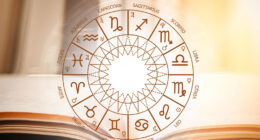Table of Contents
I. Introduction
A. Introduction to Nakshatras
Have you ever looked up at the night sky and wondered about the twinkling stars? In ancient times, people believed that these stars held special meanings and influences on our lives. This belief led to the creation of a fascinating branch of knowledge called Vedic Astrology, which is based on ancient Indian wisdom.
One important aspect of Vedic Astrology is the study of Nakshatras. Pronounced as ‘nuck-shut-ras’, they are like little star neighborhoods in the night sky. Let’s take a closer look at what Nakshatras are and why they are significant in Vedic Astrology.
What Are Nakshatras?
Nakshatras are groups of stars that form distinct patterns in the sky. You can think of them as cosmic markers, each with its own unique characteristics. There are 27 Nakshatras in total, and they’re spread across the celestial sphere.
The Meaning Behind Nakshatras
In Vedic Astrology, each Nakshatra is linked to a planet, which influences our lives in various ways. For example, one Nakshatra might be associated with creativity, while another with determination or compassion. These qualities are believed to be connected to the energy of the planet linked to that Nakshatra.
How Nakshatras Affect You
The Nakshatra that was present at the time of your birth is believed to influence your personality, behavior, and even your life path. It’s like having a special cosmic fingerprint that makes you, well, you!
The Nakshatras’ Journey
The Moon, which is quite important in Vedic Astrology, travels through one Nakshatra each day. This means that it takes about 27 days for the Moon to move through all 27 Nakshatras.
Choosing Auspicious Times
People often consult Vedic Astrologers to help them pick the right time for important events like weddings, starting a business, or even naming a newborn. They use Nakshatras to find auspicious moments based on the energy and characteristics associated with a particular Nakshatra.
II. Understanding Nakshatras
A. Definition and Origin
Nakshatras may appear to be a complicated term, but they are actually pretty simple once you understand them. Consider gazing up at the night sky and seeing all of the stars. Ancient people saw patterns in the stars and named them accordingly. These unique constellations of stars are known as Nakshatras.
The term “Nakshatra” is derived from the Sanskrit language. “Nakshatra” means “star” or “constellation” in Sanskrit. This immediately indicates that Nakshatras have anything to do with stars!
These incredible cosmic marks have long been a part of human understanding. They are derived from ancient Indian wisdom, often known as Vedic knowledge. This knowledge is a treasure trove of wisdom passed down through generations.
Consider the Nakshatras to be a map in the sky that divides the stars into separate zones. There are 27 of these zones, each with its own unique combination of stars and characteristics. People used to regard these Nakshatras as vital life guides. They believed they could teach us a lot about ourselves and our surroundings.
B. The 27 Nakshatras: Names and Characteristics
Each Nakshatra has its own special name and unique characteristics. These Nakshatras are like cosmic companions, each offering a unique set of qualities that contribute to the rich tapestry of human personalities. Understanding these attributes can provide valuable insights into your strengths and areas for growth, guiding you on your journey towards self-discovery and personal fulfillment. Let’s get to know them a little better!
1. Ashwini (The Horsemen):
- Symbolism: Associated with swiftness and healing abilities, like the energy of a galloping horse.
- Attributes: Quick thinking, dynamic, and a natural inclination towards healing professions.
2. Bharani (The Bearers):
- Symbolism: Signifies a sense of nurturing and protection, akin to a caring mother bear.
- Attributes: Determined, protective, and nurturing, often showing a strong sense of responsibility.
3. Krittika (The Cutters):
- Symbolism: Represents the sharpness and precision of a blade, indicating a truthful and decisive nature.
- Attributes: Truthful, determined, and possessing a clear sense of purpose.
4. Rohini (The Reddish One):
- Symbolism: Reflects the creative and nurturing qualities of a red cow, often associated with fertility.
- Attributes: Creative, caring, and capable of nurturing growth and abundance.
5. Mrigashira (The Deer’s Head):
- Symbolism: Resembles the curiosity and adaptability of a deer’s head, always exploring new paths.
- Attributes: Inquisitive, gentle, and flexible in adapting to new situations.
6. Ardra (The Moist One):
- Symbolism: Signifies transformation, much like the moisture that brings change to the environment.
- Attributes: Curious, transformative, and dynamic in nature.
7. Punarvasu (The Return of the Light):
- Symbolism: Represents a period of renewal and rejuvenation, similar to the return of light after darkness.
- Attributes: Kind-hearted, resourceful, and often associated with finding solutions.
8. Pushya (The Nourisher):
- Symbolism: Reflects the nurturing qualities of a cow’s udder, providing sustenance and support.
- Attributes: Caring, supportive, and wise in guiding and nurturing others.
9. Ashlesha (The Embrace):
- Symbolism: Represents the coiling nature of a snake, signifying protection and intuition.
- Attributes: Intuitive, protective, and capable of deep emotional connections.
10. Magha (The Mighty One):
- Symbolism: Reflects the regal and powerful nature of a throne, often associated with leadership.
- Attributes: Proud, regal, and possessing natural leadership qualities.
11. Purva Phalguni (The Former Red One):
- Symbolism: Represents the romantic and creative energies akin to the first bloom of love.
- Attributes: Creative, romantic, and generous in nature, often inclined towards artistic pursuits.
12. Uttara Phalguni (The Latter Red One):
- Symbolism: Reflects the benevolent and nurturing qualities associated with the later stages of love.
- Attributes: Benevolent, responsible, and noble, often showing a sense of duty towards others.
13. Hasta (The Hand):
- Symbolism: Signifies skillfulness and precision, much like the dexterity of a hand.
- Attributes: Skillful, analytical, and precise in approach.
14. Chitra (The Bright One):
- Symbolism: Reflects artistic and imaginative energies, akin to a canvas awaiting a painter’s touch.
- Attributes: Artistic, imaginative, and possessing a graceful demeanor.
15. Swati (The Independent One):
- Symbolism: Signifies independence and balance, akin to the gentle swaying of a reed in the wind.
- Attributes: Independent, diplomatic, and harmonious in nature.
16. Vishakha (The Star of Purpose):
- Symbolism: Represents the goal-oriented nature, much like a bright star leading the way.
- Attributes: Goal-oriented, determined, and sociable, often working towards a higher purpose.
17. Anuradha (The Disciple):
- Symbolism: Reflects devotion and discipline, akin to a devoted disciple following a spiritual path.
- Attributes: Devoted, disciplined, and possessing intuitive wisdom.
18. Jyeshtha (The Elder One):
- Symbolism: Signifies wisdom and strength, akin to the authority of an elder.
- Attributes: Wise, authoritative, and strong-willed in nature.
19. Mula (The Root):
- Symbolism: Represents investigative and transformative energies, akin to the deep roots of a plant.
- Attributes: Investigative, transformational, and possessing a depth of understanding.
20. Purva Ashadha (The Invincible One):
- Symbolism: Reflects ambition and endurance, akin to the invincible spirit of a warrior.
- Attributes: Ambitious, dynamic, and capable of enduring challenges.
21. Uttara Ashadha (The Latter Invincible One):
- Symbolism: Signifies patience and vision, akin to the enduring spirit of a leader.
- Attributes: Patient, wise, and visionary in approach.
22. Shravana (The Listener):
- Symbolism: Reflects the attentive and perceptive qualities of a good listener.
- Attributes: Perceptive, attentive, and disciplined in nature.
23. Dhanishta (The Wealthy One):
- Symbolism: Represents prosperity and abundance, akin to the wealth of skills and talents.
- Attributes: Prosperous, ambitious, and independent in approach.
24. Shatabhisha (The Hundred Healers):
- Symbolism: Signifies innovation and healing, akin to a hundred healers working in unison.
- Attributes: Innovative, mysterious, and possessing a healing nature.
25. Purva Bhadrapada (The Former Happy Feet):
- Symbolism: Reflects spiritual and compassionate energies, akin to the joyous dance of happy feet.
- Attributes: Spiritual, compassionate, and imaginative in approach.
26. Uttara Bhadrapada (The Latter Happy Feet):
- Symbolism: Signifies empathy and humanitarian values, akin to the selfless service of happy feet.
- Attributes: Empathetic, humanitarian, and selfless in nature.
27. Revati (The Wealthy One):
- Symbolism: Represents expansiveness and nurturing qualities, akin to the wealth of the universe.
- Attributes: Compassionate, nurturing, and possessing an expansive nature.
C. Grouping into four categories: Deva, Nara, Rakshasa, and Mixed
In Vedic Astrology, Nakshatras are grouped into four distinct categories, each carrying its own set of qualities and influences on individuals’ lives. Let’s explore these categories to gain a better understanding of how they shape our personalities and life paths.
1. Deva Nakshatras:
Deva Nakshatras are associated with divine qualities. People born under these Nakshatras tend to exhibit virtues like kindness, compassion, and a strong sense of morality. They are often driven by a desire to help others and make a positive impact on the world.
2. Nara Nakshatras:
Nara Nakshatras are linked with human-like characteristics. Individuals born under these Nakshatras possess qualities commonly seen in ordinary humans, such as ambition, practicality, and a balanced approach to life. They tend to be hardworking and goal-oriented, striving for success in their endeavors.
3. Rakshasa Nakshatras:
Rakshasa Nakshatras are associated with more challenging traits. People born under these Nakshatras may exhibit qualities like competitiveness, aggression, and a desire for power. While they have the potential for great achievements, they may also face inner conflicts that need to be managed.
4. Mixed Nakshatras:
Mixed Nakshatras display a blend of characteristics from the other three categories. Individuals born under these Nakshatras may possess a diverse range of traits, making them adaptable and able to navigate various situations with ease.
Understanding which category your Nakshatra falls into can provide valuable insights into your personality, strengths, and areas for growth. Consulting with a knowledgeable Vedic Astrologer can help you gain a deeper understanding of how these categories influence your life’s journey.
Incorporating this knowledge into your self-discovery journey can lead to a greater sense of self-awareness and a more harmonious approach to life’s challenges. Embracing the unique qualities associated with your Nakshatra category can empower you to make informed decisions and lead a fulfilling life.
III. Nakshatras and Natal Charts
A. Role of Nakshatras in creating a comprehensive Natal Chart
When it comes to understanding yourself on a deeper level, Vedic Astrology uses a special tool known as the Natal Chart. At the heart of this chart lie the Nakshatras, which play a crucial role in painting a comprehensive picture of who you are. Let’s delve into how Nakshatras contribute to creating a meaningful Natal Chart.
1. Nakshatras as Cosmic Signposts:
- Nakshatras are like celestial signposts in the sky, marking the position of the Moon at the time of your birth. This snapshot holds a special significance in Vedic Astrology.
2. Personalized Cosmic Imprint:
- Each Nakshatra carries its own distinct energy and characteristics. By knowing which Nakshatra was present at your birth, you gain insight into the unique cosmic imprint that shapes your personality.
3. The Moon’s Journey:
- The Moon moves through all 27 Nakshatras over the course of a month. Its position at your birth reflects specific qualities that influence your emotions, instincts, and inner self.
4. Linking Nakshatras with Planets:
- Nakshatras are closely linked with planets, and these planetary associations add another layer of meaning to your Natal Chart. This interplay reveals how celestial forces influence your life.
5. Nakshatras in Different Areas of Life:
- Each Nakshatra is connected to various aspects of life, such as career, relationships, and personal growth. Understanding which Nakshatras influence which areas helps astrologers provide insightful guidance.
6. Combining Nakshatras for In-depth Insights:
- By considering the Nakshatras of both the Moon and other key planets in your Natal Chart, astrologers paint a detailed portrait of your strengths, challenges, and potential life path.
7. Timing and Life Events:
- Nakshatras are also used to determine auspicious timings for important life events like marriages, starting a business, or embarking on a new venture. This helps align your actions with favorable cosmic energies.
8. A Personalized Journey:
- Your Natal Chart, intricately woven with Nakshatras, is a roadmap to self-discovery. It offers valuable insights into your unique talents, potential areas of growth, and how you can navigate life’s challenges.
B. Influence of Nakshatras on various aspects of life:
Nakshatras, those clusters of stars in the night sky, hold a special place in Vedic Astrology. They’re not just distant specks of light; they have a real influence on our lives. Let’s take a closer look at how Nakshatras shape various aspects of our journey.
1. Personality Traits:
- Nakshatras are like cosmic fingerprints. The one present at your birth shapes your personality. They influence your strengths, weaknesses, and how you approach life.
2. Emotional Well-being:
- Your emotional landscape is influenced by the Nakshatra of the Moon at your birth. It affects how you process feelings, react to situations, and connect with others.
3. Career and Life Path:
- Different Nakshatras are associated with various professions and life paths. Knowing which Nakshatra governs your career can guide you towards a fulfilling and purposeful vocation.
4. Relationships and Compatibility:
- Nakshatras also play a role in love and partnerships. They influence your compatibility with others, affecting the dynamics of your relationships.
5. Financial Matters:
- The Nakshatras can offer insights into your financial tendencies. They may influence how you approach money, investments, and material possessions.
6. Health and Well-being:
- Some Nakshatras have associations with specific health issues. Understanding these connections can help in preventive care and maintaining overall well-being.
7. Spiritual Growth:
- For those on a spiritual journey, Nakshatras can provide guidance. They may point towards practices, paths, or philosophies that resonate with your soul’s journey.
8. Decision-Making and Timing:
- Nakshatras are also used for selecting auspicious times for important life events. They help align actions with favorable cosmic energies, enhancing the chances of success.
9. Conflict Resolution:
- Knowing the Nakshatras of individuals involved in a conflict can shed light on underlying issues and provide insights for resolution.
10. Life Transitions: –
- During major life transitions like marriage or starting a family, Nakshatras are consulted to ensure these steps are taken at the most harmonious times.
IV. Nakshatras and Dasha Systems
A. Overview of Dasha Systems in Vedic Astrology
Have you ever wondered how Vedic Astrologers predict the ups and downs in our lives? They use a special tool called Dasha Systems. Let’s break down this fascinating aspect of astrology in a simple and easy-to-understand way.
What are Dasha Systems?
Dasha Systems are like cosmic clocks that measure the movement of planets in our birth chart. They help astrologers predict different phases of our life, from childhood to old age.
The Main Players: Mahadasha and Antardasha
- Mahadasha: This is the big player, representing a major period of influence in our lives. Each Mahadasha is ruled by a specific planet, and it lasts for a set number of years, depending on the planet’s position in our chart.
- Antardasha: Think of this as the supporting actor. Within each Mahadasha, there are sub-periods called Antardashas. These are influenced by the planets that are connected to the ruling planet of the Mahadasha.
How Does it Work?
Imagine your life as a big book with chapters. Each chapter represents a Mahadasha period. Within each chapter, there are different sections, which are the Antardashas. These chapters and sections guide the storyline of your life.
Predicting Life Events:
- Transitions: When one Mahadasha ends and another begins, it can bring about significant changes or shifts in your life. For example, a shift from a Mercury to a Venus Mahadasha might indicate a change in communication style to a more artistic or romantic approach.
- Influences on Specific Areas: Different planets rule different aspects of our lives. For example, Mercury may influence communication and learning, while Mars may affect career and ambition.
- Timing of Events: Dasha Systems can help in predicting when certain events may occur, such as marriage, career advancements, or periods of challenges.
Using Dasha Systems Responsibly:
It’s important to remember that while Dasha Systems provide valuable insights, they are not set in stone. They offer guidance, but free will and other factors also play a role in shaping our lives.
Dasha Systems in Vedic Astrology are like a roadmap to understanding the different chapters and sections of our lives. They offer valuable insights into the influences that shape our journey. By understanding these cosmic timekeepers, we can navigate life’s twists and turns with a clearer sense of purpose. Remember, your life’s story is uniquely written, and Dasha Systems provide the script!
B. Role of Nakshatras in determining Dasha periods
In the intriguing world of Vedic Astrology, Nakshatras play a crucial role in shaping our destiny. They act like cosmic markers, guiding us through different phases of life known as Dasha periods. Let’s unravel how Nakshatras influence these significant chapters.
1. The Cosmic Connection:
- Nakshatras are intimately linked with the Dasha periods. The Nakshatra of the Moon at the time of our birth acts as a starting point, setting the tone for the journey ahead.
2. Rulership and Influence:
- Each Dasha period is ruled by a specific planet, which in turn, is associated with a particular Nakshatra. This cosmic alignment forms the basis for the events and experiences during that period.
3. Amplifying Cosmic Energies:
- The qualities and attributes of the ruling Nakshatra enhance the effects of the corresponding planet. For instance, if the Moon is in a Nakshatra known for compassion, this quality will be amplified during the Moon Dasha period.
4. Timing of Life Events:
- Nakshatras help in pinpointing when certain significant life events are likely to occur. For example, a Nakshatra associated with career growth might indicate a period of professional advancement during its Dasha.
5. Balancing Influences:
- Some Dasha periods might be more challenging, while others could be filled with positive developments. Nakshatras offer insights into how to navigate these phases with grace and resilience.
6. Personalized Guidance:
- By understanding the Nakshatras influencing a specific Dasha period, astrologers can offer personalized advice on how to make the most of that time, including suggesting suitable activities or practices.
7. Aligning with Cosmic Forces:
- Being aware of the Nakshatras associated with your current Dasha period allows you to align your actions and decisions with the prevailing cosmic energies. This can lead to more fruitful and harmonious outcomes.
8. Balancing Free Will and Destiny:
- While Nakshatras provide a framework for understanding Dasha periods, it’s essential to remember that we have free will. We can choose how we respond to the influences, shaping our own path within the cosmic design.
C. Impact of Nakshatras on major life events during Dasha periods
In the realm of Vedic Astrology, Nakshatras hold significant sway over our life’s journey. They act as cosmic influencers, guiding the course of major events, particularly during Dasha periods. Let’s explore how Nakshatras shape these pivotal moments.
1. Personalized Cosmic Signatures:
- The Nakshatra present at your birth serves as a cosmic fingerprint, influencing your path in life. This Nakshatra continues to exert its impact during specific Dasha periods.
2. Birth Chart and Dasha Periods:
- Each Dasha period is ruled by a particular planet, and the Nakshatra associated with that planet further refines the influences at play during that period.
3. Timing of Significant Events:
- Nakshatras play a crucial role in determining when key life events may unfold. For example, a Nakshatra associated with love and partnerships could signify the onset of a meaningful romantic relationship.
4. Career Milestones:
- The Nakshatra ruling a specific Dasha period can provide insights into professional growth and achievements. This knowledge helps in making informed career decisions and maximizing opportunities.
5. Relationship Dynamics:
- Nakshatras also influence the nature of our relationships. Understanding the Nakshatra associated with a particular Dasha period can shed light on the dynamics with family, friends, and partners.
6. Financial Matters:
- The Nakshatras wield their influence on financial matters too. Some periods may be more conducive to wealth accumulation, while others may necessitate prudent financial management.
7. Health and Well-being:
- Certain Nakshatras have associations with specific health concerns. Being aware of these influences allows for proactive health measures and timely care.
8. Spiritual Growth and Self-Discovery:
- Nakshatras can guide us on our spiritual journey. They may indicate periods conducive to inner growth, self-reflection, and exploration of higher truths.
9. Navigating Challenges:
- Understanding the Nakshatras governing a particular Dasha period can provide valuable insights into potential challenges. This awareness empowers us to face difficulties with resilience and adaptability.
10. Embracing Opportunities: –
- By recognizing the Nakshatras’ influence, we can align our actions and decisions with prevailing cosmic energies. This alignment amplifies our ability to seize opportunities and make the most of each phase.
V. Remedies and Nakshatras
A. Understanding the concept of remedial measures in Vedic Astrology
In the world of Vedic Astrology, remedial measures are like gentle nudges from the universe, offering guidance on how to navigate life’s challenges and enhance our well-being. Know about this concept in a straightforward and easily understandable way.
What are Remedial Measures?
Remedial measures are practices or actions suggested by Vedic Astrologers to help mitigate challenges and enhance positive energies in our lives. They are like personalized prescriptions for well-being based on our unique astrological makeup.
The Purpose of Remedial Measures:
The primary aim of remedial measures is to harmonize the energies indicated in our birth chart. By aligning ourselves with these cosmic influences, we can enhance our strengths, overcome obstacles, and lead a more fulfilling life.
Types of Remedial Measures:
- Gemstone Recommendations: Certain gemstones are associated with specific planets. Wearing the recommended gemstone can enhance the positive energies of that planet, helping to balance its influences.
- Mantras and Chants: Reciting specific mantras or chants associated with particular planets can help align our energies with their positive qualities, thereby mitigating negative influences.
- Yantras and Talismans: Yantras are geometric diagrams representing cosmic energies. Carrying or placing a yantra related to a specific planet can attract and amplify its positive vibrations.
- Vedic Rituals and Pujas: Performing Vedic rituals or pujas, often guided by a knowledgeable astrologer, can help appease and seek blessings from specific deities and planets.
- Charity and Acts of Kindness: Engaging in acts of charity, such as donating to the less fortunate or helping those in need, can help balance negative karmas and invite positive energies.
- Yoga and Meditation: Practices like yoga and meditation offer a holistic approach to balancing our energies, promoting mental clarity, emotional well-being, and spiritual growth.
It’s crucial to seek guidance from a qualified Vedic Astrologer before implementing any remedial measures. They will analyze your birth chart and provide personalized recommendations tailored to your unique astrological profile.
B. Specific remedies associated with each Nakshatra
In the fascinating realm of Vedic Astrology, Nakshatras hold the key to personalized remedies. Each Nakshatra comes with its own set of challenges and opportunities, and understanding them allows us to navigate life’s journey with grace. Know the specific remedies associated with each Nakshatra in simple terms.
1. Ashwini Nakshatra (The Horsemen):
- Remedies: Wearing a red coral gemstone, offering jaggery to horses, and performing acts of kindness towards animals.
2. Bharani Nakshatra (The Bearers):
- Remedies: Chanting the Maha Mrityunjaya mantra, offering water to Lord Shiva, and performing acts of charity.
3. Krittika Nakshatra (The Cutters):
- Remedies: Offering red flowers to Lord Kartikeya, reciting the Gayatri mantra, and practicing self-discipline.
4. Rohini Nakshatra (The Reddish One):
- Remedies: Planting and nurturing red flowering plants, offering sweets to the less fortunate, and meditating on the heart chakra.
5. Mrigashira Nakshatra (The Deer’s Head):
- Remedies: Donating green vegetables, wearing emerald gemstone, and practicing mindful breathing exercises.
6. Ardra Nakshatra (The Moist One):
- Remedies: Chanting the Rudra Gayatri mantra, offering water to Lord Shiva, and practicing pranayama.
7. Punarvasu Nakshatra (The Return of the Light):
- Remedies: Lighting a ghee lamp, offering milk to deities, and performing acts of kindness towards children.
8. Pushya Nakshatra (The Nourisher):
- Remedies: Offering food to the needy, wearing a pearl gemstone, and chanting the Annapurna mantra.
9. Ashlesha Nakshatra (The Embrace):
- Remedies: Chanting the Mahamrityunjaya mantra, offering milk to snakes, and practicing forgiveness.
10. Magha Nakshatra (The Mighty One):
- Remedies: Offering red flowers to ancestors, performing pitru tarpana (offering to ancestors), and practicing acts of respect towards elders.
11. Purva Phalguni Nakshatra (The Former Red One):
- Remedies: Performing acts of love and kindness, wearing a diamond gemstone, and offering red roses to deities.
12. Uttara Phalguni Nakshatra (The Latter Red One):
- Remedies: Offering water to Lord Vishnu, wearing a ruby gemstone, and practicing acts of charity towards the elderly.
13. Hasta Nakshatra (The Hand):
- Remedies: Wearing a sapphire gemstone, offering water to the Sun, and practicing acts of creativity.
14. Chitra Nakshatra (The Bright One):
- Remedies: Offering prayers to Goddess Saraswati, wearing a blue sapphire gemstone, and practicing acts of artistic expression.
15. Swati Nakshatra (The Independent One):
- Remedies: Offering prayers to Lord Vayu (the wind god), wearing a Neelam (blue sapphire) gemstone, and practicing acts of independence and self-expression.
16. Vishakha Nakshatra (The Star of Purpose):
- Remedies: Chanting the Vishnu Sahasranama, offering water to a Peepal tree, and practicing acts of devotion.
17. Anuradha Nakshatra (The Disciple):
- Remedies: Offering food to the needy, chanting the Gayatri mantra, and practicing acts of discipline.
18. Jyeshtha Nakshatra (The Elder One):
- Remedies: Offering prayers to Lord Shiva, wearing a Gomedh (hessonite) gemstone, and practicing acts of wisdom.
19. Mula Nakshatra (The Root):
- Remedies: Offering prayers to Lord Kali, planting and nurturing medicinal herbs, and practicing acts of inner transformation.
20. Purva Ashadha Nakshatra (The Invincible One):
- Remedies: Offering prayers to Lord Ganesha, wearing a yellow sapphire gemstone, and practicing acts of perseverance.
21. Uttara Ashadha Nakshatra (The Latter Invincible One):
- Remedies: Offering prayers to Lord Vishnu, wearing a blue sapphire gemstone, and practicing acts of leadership.
22. Shravana Nakshatra (The Listener):
- Remedies: Chanting the Saraswati Gayatri mantra, offering water to deities, and practicing acts of attentiveness.
23. Dhanishta Nakshatra (The Wealthy One):
- Remedies: Offering prayers to Lord Shiva, wearing a blue sapphire gemstone, and practicing acts of abundance.
24. Shatabhisha Nakshatra (The Hundred Healers):
- Remedies: Offering prayers to Lord Varuna, wearing a blue sapphire gemstone, and practicing acts of healing and compassion.
25. Purva Bhadrapada Nakshatra (The Former Happy Feet):
- Remedies: Offering prayers to Lord Vishnu, wearing a yellow sapphire gemstone, and practicing acts of spirituality.
26. Uttara Bhadrapada Nakshatra (The Latter Happy Feet):
- Remedies: Offering prayers to Lord Shani, wearing a Neelam (blue sapphire) gemstone, and practicing acts of selflessness.
27. Revati Nakshatra (The Wealthy One):
- Remedies: Offering prayers to Lord Vishnu, wearing a yellow sapphire gemstone, and practicing acts of abundance.
Remember, these remedies are meant to align us with the energies of each Nakshatra and facilitate our personal growth and well-being. It’s always advisable to consult a knowledgeable Vedic Astrologer before implementing any remedies to ensure they are appropriate for your unique astrological profile.
VI. Case Studies: Nakshatras in Action
A. Real-life examples demonstrating the influence of Nakshatras on individuals’ lives
Nakshatras, those celestial markers in Vedic Astrology, play a fascinating role in shaping individuals’ destinies. Explore some real-life examples that vividly demonstrate the profound influence of Nakshatras on people’s lives.
1. Rohini Nakshatra and Artistic Expression:
- Case Study: Emma, born under Rohini Nakshatra, always felt an intense connection to art. Her paintings were known for their vivid colors and emotive depth. Her Nakshatra’s influence on creativity was unmistakable.
2. Swati Nakshatra and Independence:
- Case Study: John, born under Swati Nakshatra, displayed an early inclination towards independence. He pursued a career as a solo traveler and writer, embodying the self-reliant spirit of his Nakshatra.
3. Purva Bhadrapada Nakshatra and Spirituality:
- Case Study: Priya, born under Purva Bhadrapada Nakshatra, found solace in spiritual practices from a young age. Her Nakshatra’s influence led her to explore different philosophies and ultimately embrace a life dedicated to spiritual growth.
4. Mrigashira Nakshatra and Curiosity:
- Case Study: David, born under Mrigashira Nakshatra, was always curious about the world. His Nakshatra’s influence spurred him to become a journalist, where he could satiate his appetite for exploring diverse perspectives.
5. Revati Nakshatra and Compassion:
- Case Study: Sarah, born under Revati Nakshatra, exhibited an extraordinary capacity for compassion. Her Nakshatra’s influence guided her towards a career in nursing, where she dedicated herself to the well-being of others.
6. Hasta Nakshatra and Precision:
- Case Study: Michael, born under Hasta Nakshatra, excelled in fields that demanded precision. His Nakshatra’s influence shone through in his career as a surgeon, where every move was guided by meticulous precision.
7. Ashlesha Nakshatra and Protective Instincts:
- Case Study: Lisa, born under Ashlesha Nakshatra, possessed a strong protective instinct towards her loved ones. Her Nakshatra’s influence led her to become an advocate for vulnerable populations, channeling her nurturing energy into advocacy work.
8. Dhanishta Nakshatra and Ambition:
- Case Study: Mark, born under Dhanishta Nakshatra, exhibited a relentless drive towards success. His Nakshatra’s influence propelled him to climb the corporate ladder, ultimately becoming a successful entrepreneur.
9. Pushya Nakshatra and Nurturing:
- Case Study: Karen, born under Pushya Nakshatra, always felt a deep sense of responsibility towards her family. Her Nakshatra’s influence guided her to create a nurturing and stable home environment.
These real-life stories vividly illustrate how Nakshatras leave their imprint on individuals’ lives. Understanding this influence allows us to appreciate our unique strengths and tendencies, ultimately guiding us towards a more purposeful and fulfilling journey.
VII. Nakshatras and Compatibility
A. Influence of Nakshatras on compatibility between individuals
In the world of Vedic Astrology, Nakshatras are like cosmic matchmakers, playing a crucial role in determining compatibility between individuals. Learn how these celestial markers influence our connections with others.
1. Shared Nakshatras:
- When two individuals share the same Nakshatra, it signifies a strong foundational connection. It’s like having a common language, making it easier to understand and support each other.
2. Complementary Nakshatras:
- Sometimes, individuals have Nakshatras that complement each other. This can create a harmonious balance in the relationship, as each person brings unique strengths and qualities to the partnership.
3. Challenging Nakshatras:
- In some cases, individuals may have Nakshatras that clash in terms of energy and characteristics. This can lead to differences in communication and approaches to life.
4. Nakshatras and Emotional Compatibility:
- The Nakshatras of the Moon in both individuals play a significant role in emotional compatibility. Similar emotional needs and expressions can create a strong bond.
5. Nakshatras and Communication Styles:
- Different Nakshatras can influence communication styles. Some may be more expressive, while others may be reserved. Understanding these differences can lead to better communication in relationships.
6. Nakshatras and Shared Interests:
- Certain Nakshatras have specific interests and inclinations associated with them. When individuals share these Nakshatras, they are likely to have common hobbies or pursuits, enhancing compatibility.
7. Balancing Strengths and Weaknesses:
- Nakshatras can highlight each person’s strengths and areas for growth. A compatible pair can support and uplift each other in their respective journeys.
8. Nakshatras and Long-term Compatibility:
- Considering Nakshatras in compatibility assessments can provide insights into the potential for a long-lasting and fulfilling relationship.
VIII. Evolution of Nakshatras in Modern Astrology
A. Integration of Nakshatras in Western Astrology practices
Combining the traditional methods of Western Astrology with the knowledge of Vedic Astrology’s Nakshatras has gained popularity in recent years. This combination allows for a wider range of in-depth comprehension and a more thorough grasp of cosmic effects. Let’s examine how Western Astrology practises can effectively incorporate Nakshatras.
1. Nakshatras as Lunar Mansions:
- Western Astrology often emphasizes the Sun, Moon, and planets in various signs. Nakshatras, akin to lunar mansions, provide a nuanced understanding of the Moon’s position, adding depth to the analysis.
2. Nakshatras in Birth Chart Analysis:
- Incorporating Nakshatras into a natal chart offers a more detailed examination of an individual’s personality, emotions, and life path. It provides additional layers of information beyond traditional Western placements.
3. Lunar Phases and Nakshatras:
- The Moon’s phase at birth, which is central in Western Astrology, aligns with specific Nakshatras. This integration enhances the interpretation of the Moon’s influence on an individual’s psyche.
4. Transits and Nakshatras:
- Integrating Nakshatras into transit analysis allows for a finer understanding of how the Moon and planets interact within specific lunar mansions. This adds a layer of specificity to timing and events.
5. Nakshatras in Relationship Compatibility:
- When assessing compatibility, incorporating Nakshatras provides a more comprehensive view of emotional and psychological dynamics between individuals, complementing Western techniques.
6. Eclipses and Nakshatras:
- Eclipses, pivotal points in Western Astrology, align with specific Nakshatras. Understanding the Nakshatra influence on eclipses can provide deeper insights into their transformative effects.
7. Incorporating Remedies:
- Nakshatras offer a unique approach to remedies, focusing on specific lunar energies. This integration can enhance the effectiveness of remedial measures in Western Astrology consultations.
Integrating Nakshatras into Western Astrology enriches the depth and precision of astrological insights. By embracing both systems, astrologers can offer clients a holistic perspective, providing a more comprehensive roadmap for their journey through life’s cosmic influences. Remember, astrology is a vast tapestry, and each thread adds to the beauty of the whole!
IX. Final Thoughts…
An essential concept in Vedic Astrology, nakshatras provide deep insights into a person’s life path. These 27 lunar constellations, each possessing a distinct energy and quality, function as celestial markers. A person’s Nakshatra, or cosmic fingerprint, is determined by the Moon’s position at the moment of their birth.
Nakshatras are important because they can illuminate different facets of a person’s life. They act as emotional pillars and are closely related to the Moon’s impact on our inner selves. Knowing one’s Nakshatra can help one gain a better understanding of their emotional makeup and how they respond to situations.
In addition, nakshatras are very important in relationships. Individual compatibility and dynamics can be evaluated by taking into account each person’s unique Nakshatra. In order to foster harmonious partnerships, this understanding of emotional connection and communication styles is invaluable.
Apart from their influence on interpersonal connections, Nakshatras use the Dasha systems to guide distinct stages of life. Specific planetary periods are linked to each Nakshatra, impacting the trajectory of events and experiences. This heavenly direction gives people a sense of direction as they move through different stages of their lives.
Nakshatras also provide a special method for applying remedies. They offer particular exercises and rites designed to balance energies and lessen difficulties. These corrective actions are customised to each person’s Nakshatra, providing a unique method for reaching equilibrium and wellness.
Nakshatras are incorporated into Vedic Astrology to give a more thorough understanding of a person’s life path, strengths, and weaknesses. A deeper understanding of one’s cosmic blueprint is made possible by this all-encompassing method, which gives one the ability to make wise decisions and live a more meaningful life.
Consulting a skilled Vedic Astrologer is essential for anyone looking to harness the power of Nakshatras. With their in-depth knowledge of Nakshatras, these specialists can provide individualised guidance to help people on their cosmic journey.
In conclusion, Nakshatras illuminate people’s paths through life’s cosmic tapestry, acting as guiding stars in the field of Vedic Astrology. Their importance stems from their capacity to offer individualised perspectives on feelings, relationships, stages of life, and solutions. Accepting the wisdom of Nakshatras enables people to reach their full potential by enabling them to travel through life with purpose and clarity.









